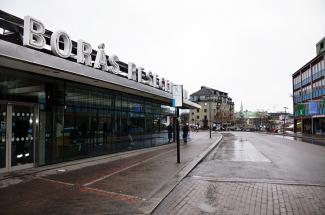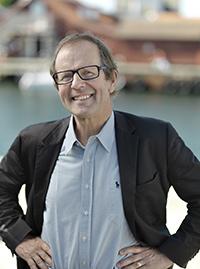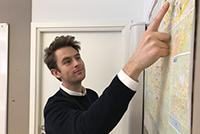Attractive communities near stations
Mistra Urban Future's investment in urban station communities has led to concrete results throughout Western Sweden. Several municipalities have changed their view of attractive areas near travel points, pedestrian streets and other walking routes.

Borås is one example where attractive corridors will be created to make the center feel bigger and more uniform. Through different workshops, the Urban Station Communities project identified a number of challenges in creating attractive communities near hubs for travel. Noise was one of those challenges, which recently resulted in a major noise research project. Another focus area was the role of the Central Station in the area.
The goal is to make cities more walkable and create attractive corridors, through reduced car traffic and increased public transport, bicycle and pedestrian traffic.

- It is important to have an integrated planning and our traffic has great potential to be used better, says Professor and also architect and urban planner Ulf Ranhagen, who together with regional planner Anna Gustafsson is the project leader for Urban Station Communities.
Seen clear impact
Ale, Alingsås, Borås, Gothenburg, Härryda, Kungälv, Lerum, Partille, Stenungsund, Trollhättan and Varberg are all municipalities involved in the project.
"Support to the municipalities in their strategic work"
- Getting the municipalities and the partners to work towards sustainable communities has been a knowledge process. Our collaboration has led to a support to the municipalities in their strategic work which in turn has formed the research and development projects, says Ulf Ranhagen.
It has led to direct effects in several municipalities. They have worked with tools and analyzes to identify concrete challenges, key issues and goals as a basis for different future scenarios.
- They have gotten new perspectives and another way to think in their strategic planning, says Ulf Ranhagen.
Borås has taken on the project in general and the idea of attractive and walkable corridors in the city in particular.
"We returned three years later, they had developed it further and concretized its comprehensive plan."
- An opportunity arose to development and it led to a nuanced way of thinking. We collaborated with the municipality and when we returned three years later, they had developed it further and concretized its comprehensive plan. Seeing an effect of the project in the comprehensive plan is a success. Urban planning is a long chain from idea to implementation, but within three to five years we will see it in reality in Borås, says Ulf Ranhagen.
Contributed to comprehensive plan
In 2014, Borås participated in the project Smart and attractive transit nodes, including the studies of so called corridors in the city. Sebastian Andersson, strategic community planner at Borås municipality, agrees that it has made an impact.

- We have incorporated the envisioning of creating corridors in the city in our comprehensive planning," says Sebastian Andersson. An important part of urban development is to focus on certain corridors, with the aim of strengthening sustainable travel and increasing urbanism. It is also an important part of linking districts with central transport nodes, mainly the central station and travel centers.
"The envisioning of corridors has become a central part of Borås'"
The corridors are included in the proposal for a new comprehensive plan that is currently under discussion. In spring 2017, Borås municipality made an in-depth study of a new corridors analysis within the framework of the Urban Station Communities project.
- The envisioning of corridors has become a central part of Borås' urban development. And this is based on research where Ulf's and his colleagues' contributions have been important, says Sebastian Andersson.
Stenungsund's new travel center
Mistra Urban Futures sees direct effects of the project also elsewhere. In Stenungsund, plans for a new travel center are being developed. The municipality received support that made it possible for them to make a decision on the new travel center.
- In a large joint workshop, different location options were evaluated, among other things, based on the goal of getting more efficient travel chains for everyday travel and reducing the number of parking spaces, says Ulf Ranhagen.
The ultimate goal is to create a completely fossil-free traffic. For this, new forms of cooperation and networks are required to combine integrated housing and transport planning.
- It's about redistributing and slowing down the increased number of travels by car and making it more attractive to travel by foot, bicycle and by public transport
Project facts
Urban Station Communities
Partners: University of Gothenburg, Chalmers, IVL Swedish Environmental Research Insitute, RISE Research Institutes of Sweden, White Architects, the municipalities of Ale, Varberg, Borås, Göteborg, Härryda, Kungälv, Lerum, Partille, Stenungsund, Trollhättan (until 2016) och Alingsås (until 2016), The Göteborg Region Association of Local Authorities (GR), Trafikverket, the Swedish Transport Administration, County Administrative Board of Västra Götaland and Region Västra Götaland.
Project period: 2012-2019